Plants are a long-term passion for Wayne and Sue Tapping. For decades they ran a wholesale nursery, landscape yard and retail garden centre.
That wasn’t quite enough plant life and plant creativity for the Tappings so at the same time they created a personal garden at their home, Wildwood, in Bilpin in the mountains west of Sydney. And when they sold the businesses, their seven-day working week habit shifted focus to the garden, which they started opening to visitors in 2012.
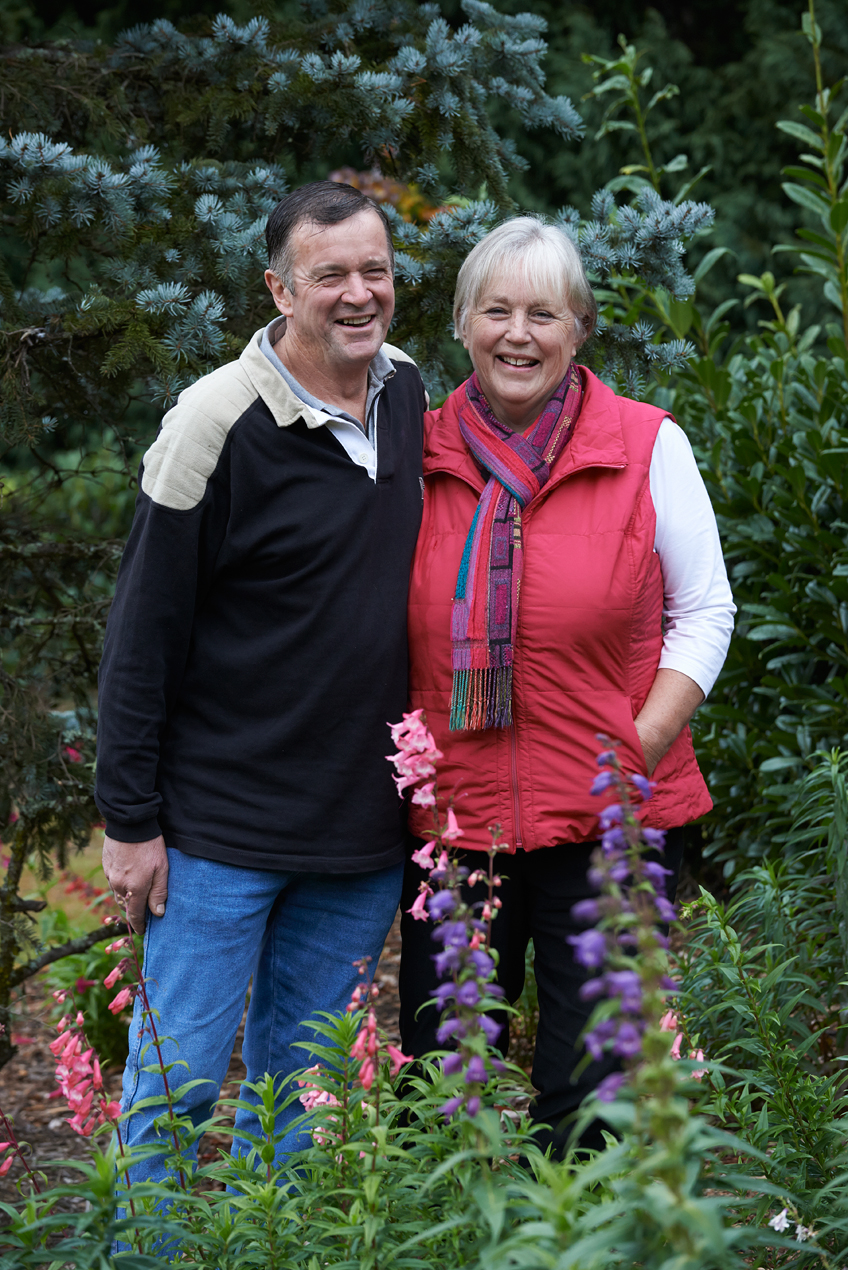
Welcome to Wildwood, the beautiful Bilpin garden of Wayne and Sue Tapping. Photo - Chris L Jones
The five-hectare garden is part wild, with mature grey gum, messmate and blueberry ash, and part formal, cool-climate garden, with avenues of dogwood,
cherries and maples. When, 18 years ago, their daughter asked to be married in the garden, the waterworks that had been slowly developing suddenly
had an urgent deadline. Ponds set into the side of the hill were connected by cascades and waterfalls. Three hundred tons of sandstone were used to
form the sides of the ponds and cascades, and another 100 ton of river rock lined them. With the help of a neighbour two 14-metre telegraph poles were
muscled into place to form a bridge and the happy couple were able to be married on the bridge, right in front of the big waterfall. Now set in a serenely
beautiful landscape, the water feature is an important part of the garden, and each year draws other happy couples, including a pair of gang gang parrots.
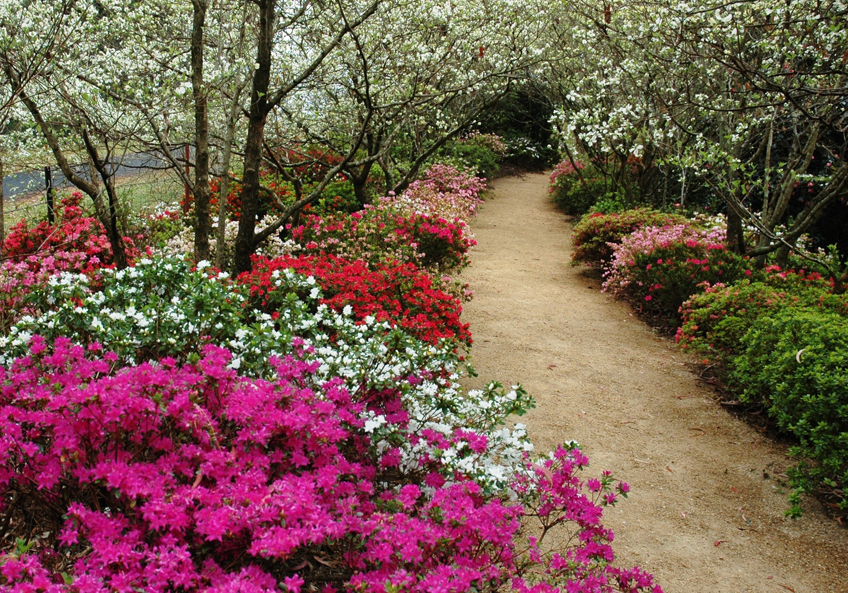
An abundance of colour in spring with azalias under dogwood. Photo - Sue Tapping
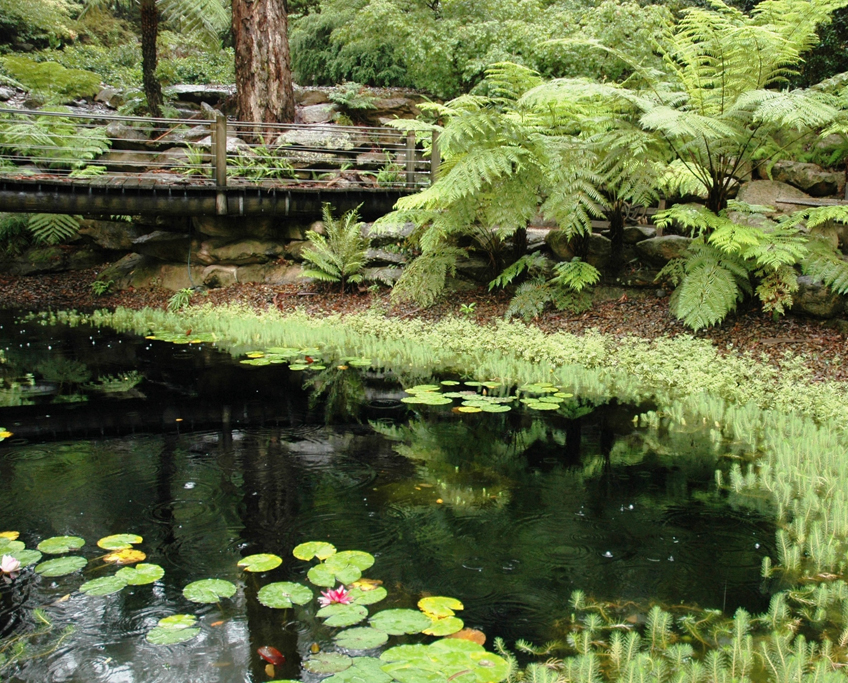
The tranquil water gardens fringed with native tree ferns. Photo - Sue Tapping
We’re loving the cherries
The avenue of nine weeping cherries, Prunus subhirtella ‘Pendula Rosea’, may have been the only plants Wayne was ever allowed to plant (Sue does
most of the designing), but he likes to boast that they rate as the most photographed part of the garden. Now close to 30 years old, the cherries have
single deep-pink flowers that are at their peak in the second and third weeks of September. Beneath them are hellebores, which start flowering in mid-August,
and are still going strong when the cherries blossom above. The hellebores are all different colours and Sue adds the odd rare yellow or black to the
mix in an attempt to get the bees to produce some interesting cross-pollinated hybrids.
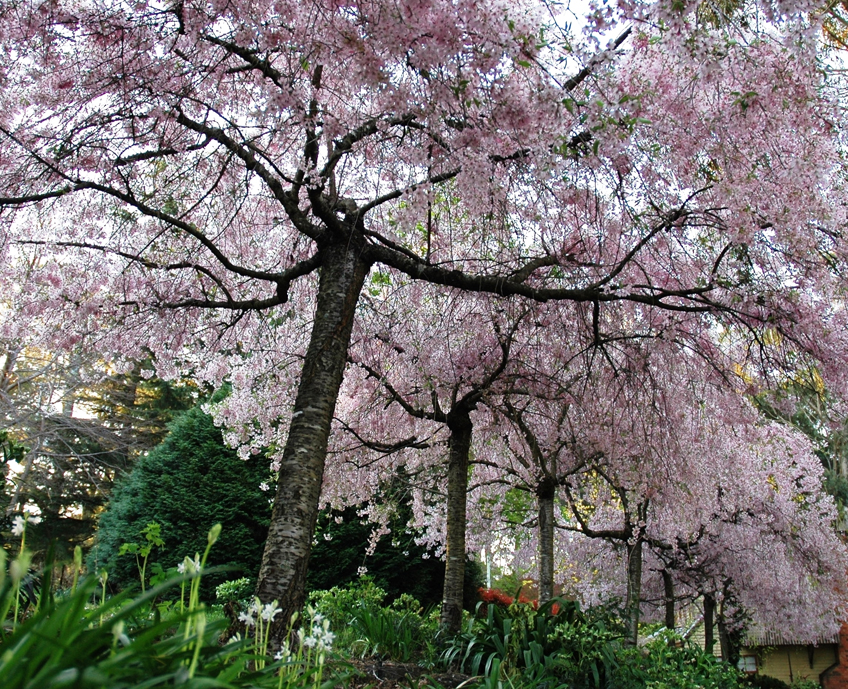
Prunus subhirtella pendula rosea. Photo - Sue Tapping
We’re cleaning the lounge
When we commissioned a stonemason known locally as The Sheriff to make a sandstone lounge we envisaged small bits of stone cemented together. Instead he
came back with a sofa comprised of a base, back, three cushions and two arms, all cut from a single five-ton piece of rock! It wasn’t what any of us
expected but it’s fantastic, with the beautiful natural colours of the rock streaming through it. It sits in the garden surrounded by river rocks of
different sizes. Before we open the garden in the spring we use a high-pressure hose to clean off any moss and dirt so that it looks like it just came
back from the upholsterers!
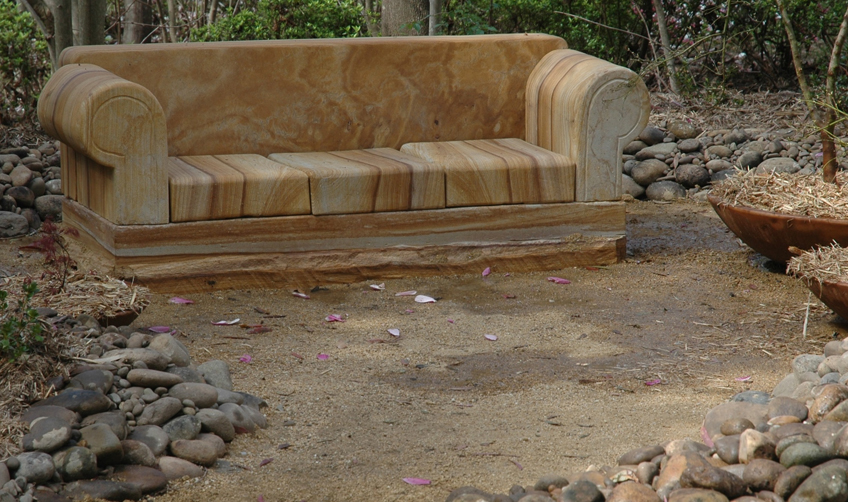
The sandstone lounge looks as though it came straight out of MONA. Testament to the skill of local stonemason, "the Sheriff" it's more quirky than comfortable. Photo - Sue Tapping
We’re pruning the camellias
Sue hated camellias after growing up with a neglected specimen grown in full sun, whose flowers browned and dropped and which was a picture of misery.
Over her years in the nursery, however, with customers enthusiastically listing the many reasons they loved camellias Sue changed her tune. She now
grows more than 600 varieties, many of them rare and unusual. She also has an interest in collecting the early Australian varieties. The camellia hybrid
‘Nicky Crisp’ is a particular favourite because of its strong upright form, large semi-double bright pink flowers and its ability to handle full sun.
Its long flowering season starts in mid-July and carries on into mid-September. In November Sue cuts back any of the camellias that need pruning, and
takes semi-hardwood cuttings. She doesn’t bother using any propagation aids to help increase the strike rate, relying on quantity to produce what she
needs. Four or five cuttings are put into each tube of mix and she says the key to success is to make sure they don’t dry out as they weather warms.
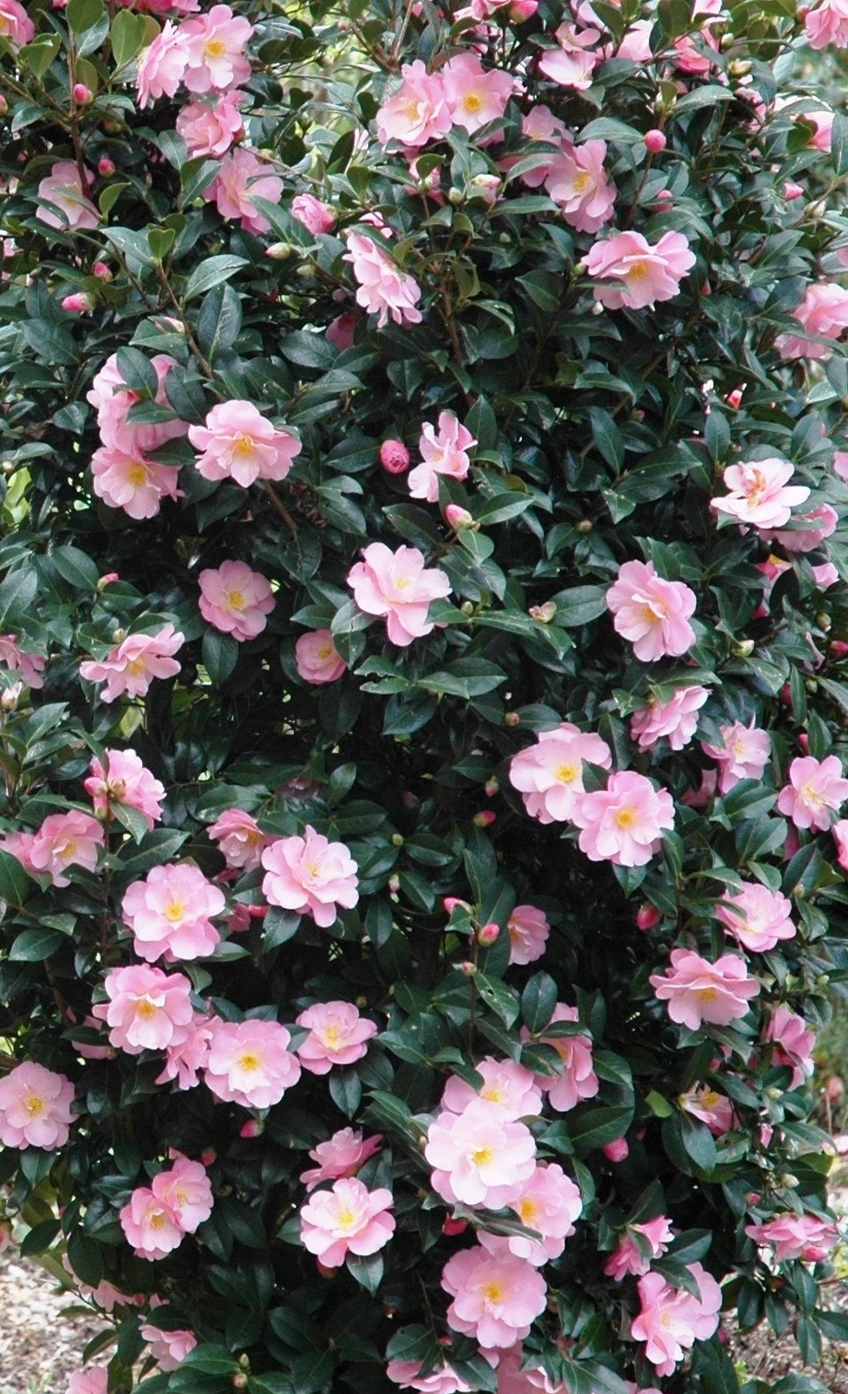
Camellia hybrid nicky crisp. Photo - Sue Tapping
It’s time to…
Beat the weeds
Flick weed is our spring curse and it’s vital to get to it before it sets seed as the seeds fly off in all directions, really punishing you.
Feed the garden
Feeding five hectares of garden is expensive, so we use long life or heat-treated chicken manures or Osmocote where necessary and deep mulch to feed the
garden naturally.
Cut back perennials
As soon as we see the new growth ready to come away at the base of the perennials, such as penstemon, salvia, shasta daises, gaura etc. we cut down the
old growth. We follow the cut with a feed.
Mulch deeply
We make our own mulch from garden clippings, and let it age in the paddock before piling it 100-150mm thick across the garden.
Spray the azaleas
We have lots of azaleas in the garden and they can be badly affected by azalea lace bug. The eggs overwinter on the leaves and when they hatch in spring
they suck the juices from the leaf, eventually giving it a silvery mottled appearance. We try to get on top of them before visitors arrive.
We’re ageing stumps
Over the years we have tried to use all the resources open to us. When neighbours have had stumps removed we’ve put our hands up and asked to have them.
The stumps are aged in the paddock and then in the summer it’s Wayne’s job to manhandle the upturned stumps into position in the Dragon Stumpery, showing
off their most dragon-esque features. The stumps are ornamented with dragon sculptures and the area adjoins a fairy, gargoyle and elf garden. This
magical garden is set under a large white flowering cherry and is a big favourite with children and adults alike. There are fierce gargoyles to keep
out evil spirits; sad, happy, scared and cranky devils; playful elves and fairies and many more. The characters are very expressive and often funny,
and are placed high and low so that they are easily missed among the camellias, maples, azaleas, plectranthus and bromeliads and visitors have to keep
their wits about them. It’s a place of fancy and fantasy for the many families who come to visit the garden.

This bloke is not to be trifled with! Photo - Sue Tapping
See for yourself
Wildwood is open for the spring season from the second weekend in August until the first weekend in November on Fridays, Saturdays, Sundays and Mondays,
10am to 4pm. Entry $10. The autumn season runs from the third weekend in March until the long weekend in June. www.wildwoodgarden.com.au
Six plants for spring
Kurume azalea
These are hardy against our winter cold. We have them under white dogwood, Cornus ‘Florida Alba’ and we especially love the tiny-flowered bright
purple ‘Hino Mayo’ and bright pink ‘Hatsugiri’.
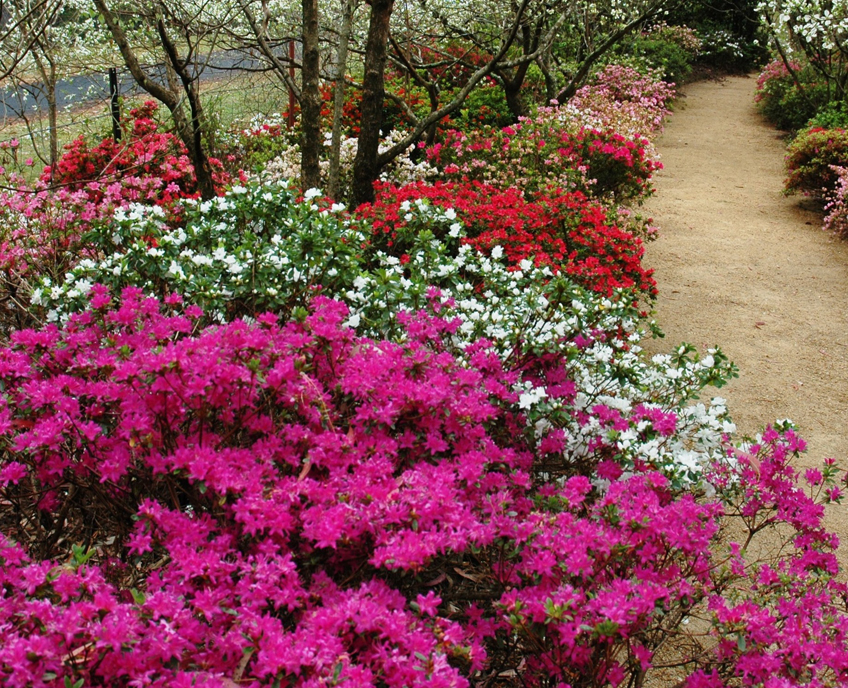
Kurume azaleas. Photo Sue Tapping
Stachyurus praecox
This is one of the first plants to bloom in spring with creamy, stiffly pendant catkins. It’s an undemanding deciduous shrub of 2-3 metres with mahogany-red stems that contrast well with the flowers.
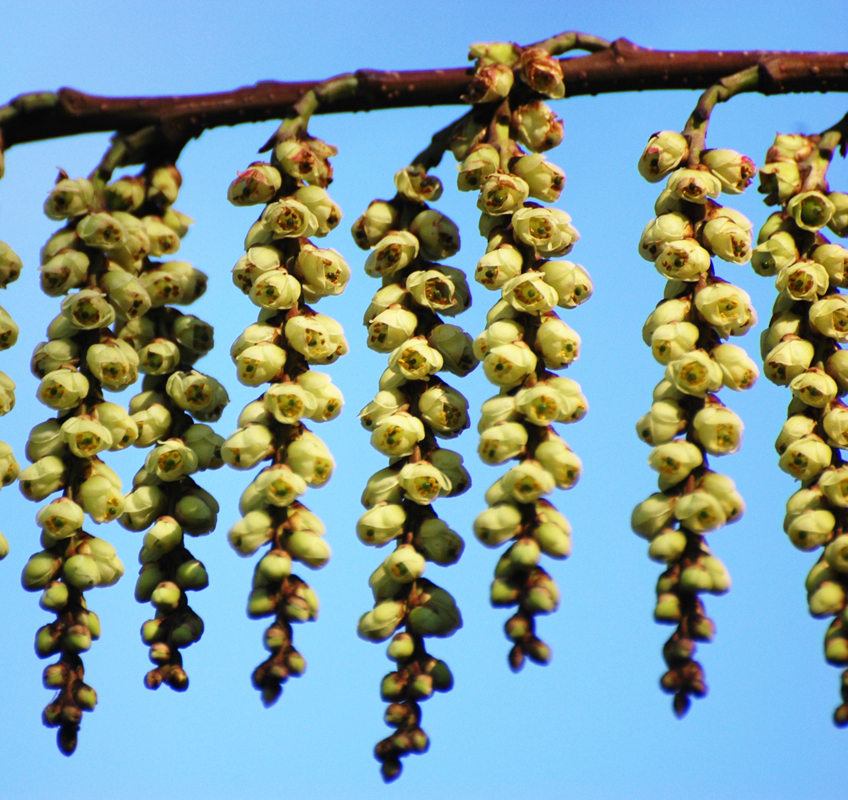
Stachyurus praecox. Photo - Sue Tapping
Magnolia ‘Star Wars’
Magnolias start flowering in the winter, and one of our favourites, ‘Star Wars’, which is a fairly big tree of about 6 – 10 metres, has large, floppy,
dark pink flowers in great abundance well into mid-September.
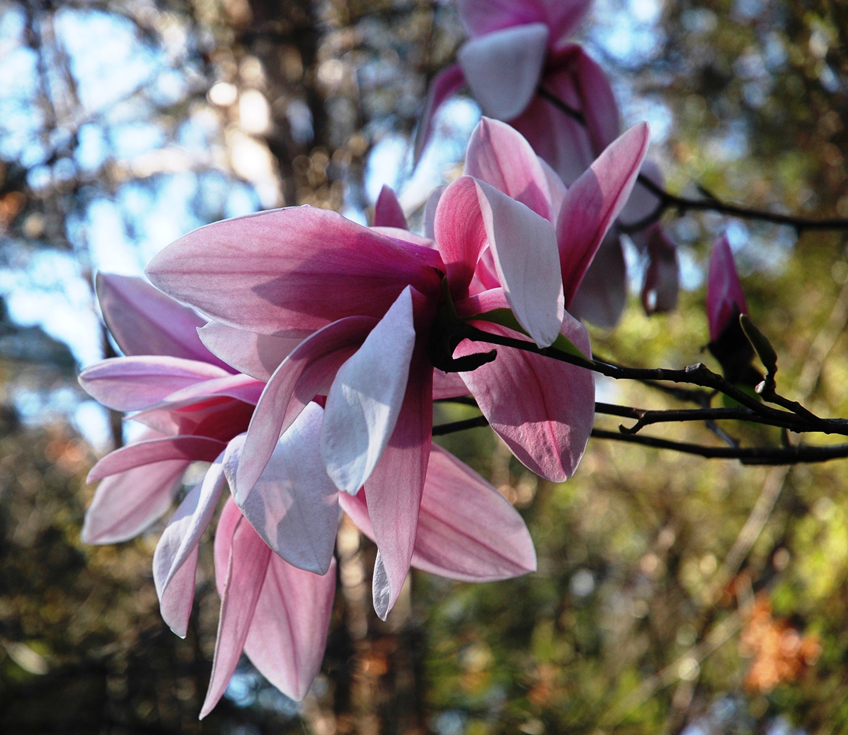
The awesome Magnolia 'Star Wars' from the Jury Magnolia stable. Photo - Sue Tapping
Clivea
Right on time every year the long row of clivea is at its best on the October long weekend. Grown under grafted maples along what used to be the front
driveway, these are mostly Belgian hybrids.
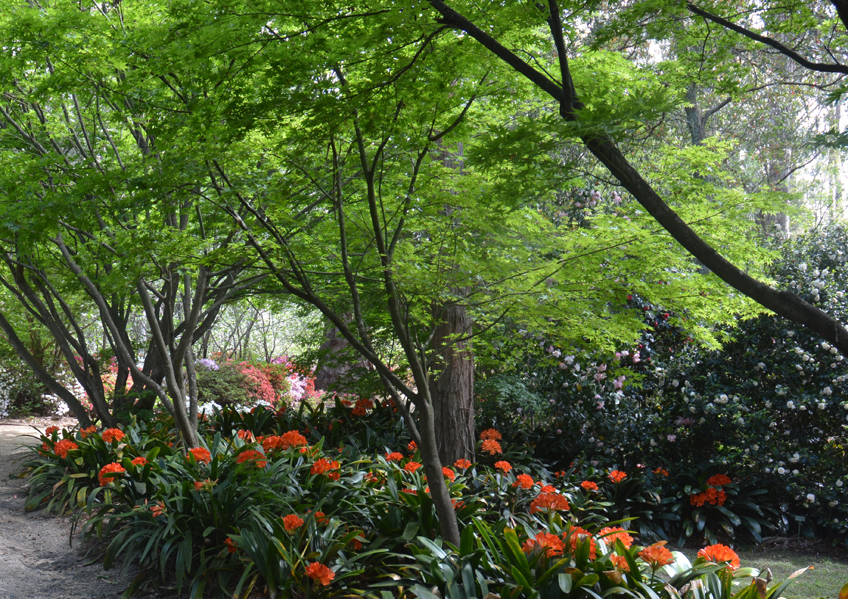
Clivias under the grafted maples. Photo - Sue Tapping
Rosa ‘Elina’
We don’t have good soil for growing roses, but this pale creamy-yellow hybrid tea rose does really well. She has a good strong bud that is great for picking
and is at her best from mid-October.
Japanese wisteria
When we built the pergola we planted a white Japanese wisteria at each post.Only one survived and it now covers the pergola and looks stunning in October.
We don’t prune it at all, except to keep the flowers out of our faces!
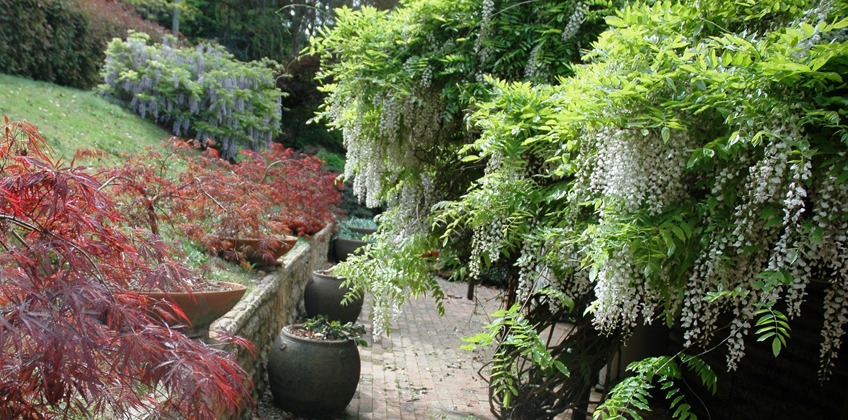
Japanese white wisteria. Photo - Sue Tapping